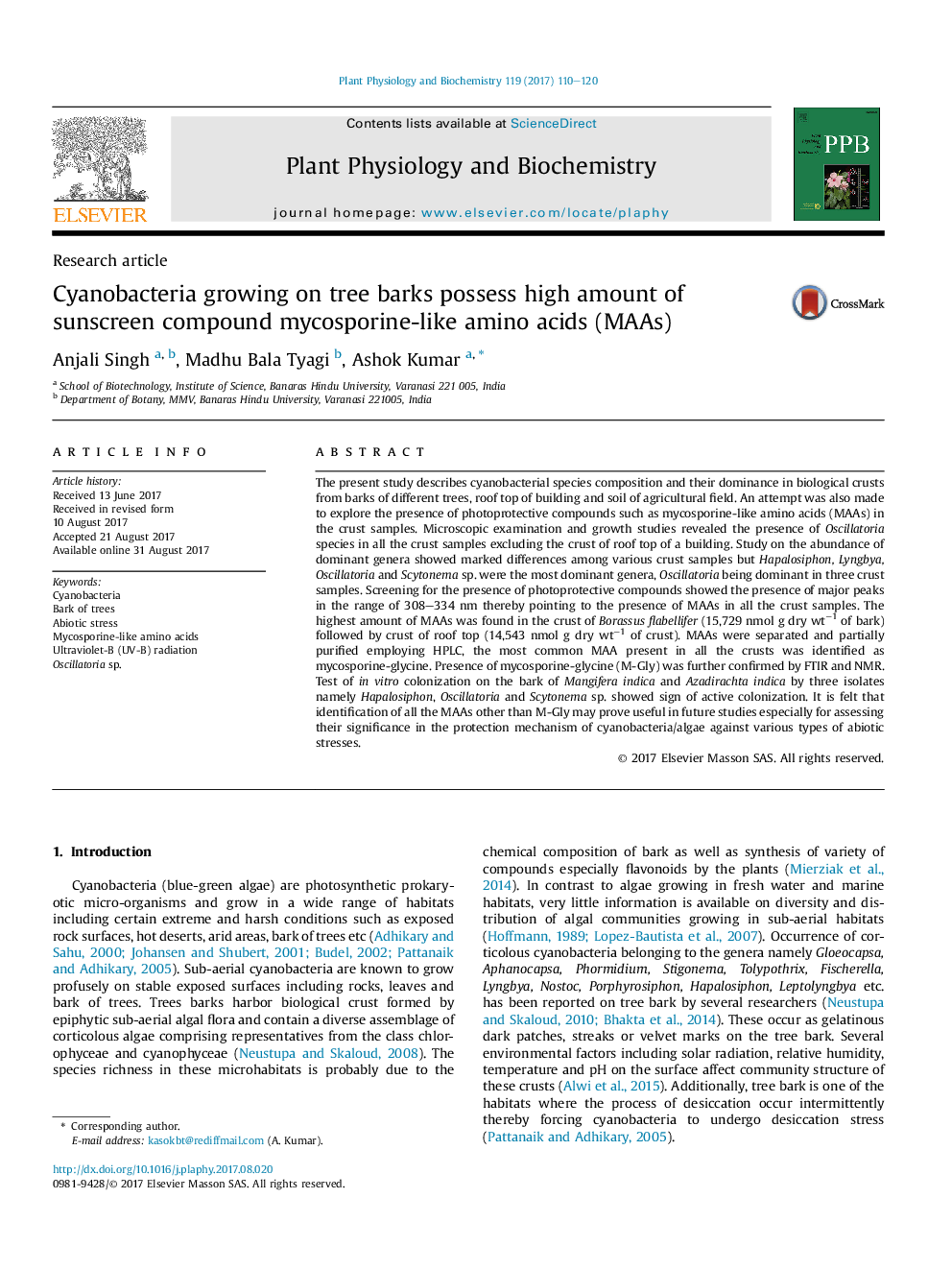| Article ID | Journal | Published Year | Pages | File Type |
|---|---|---|---|---|
| 5515296 | Plant Physiology and Biochemistry | 2017 | 11 Pages |
â¢Distribution of cyanobacteria growing on the barks of trees shows significant variations.â¢Hapalosiphon, Lyngbya, Oscillatoria and Scytonema sp. were the most dominant genera.â¢UV radiation absorbing pigment mycosporine-like amino acids (MAAs) was noted in all the crust samples.â¢In vitro colonization on the bark of two plants by three bark's cyanobacterial isolates is reported for the first time.
The present study describes cyanobacterial species composition and their dominance in biological crusts from barks of different trees, roof top of building and soil of agricultural field. An attempt was also made to explore the presence of photoprotective compounds such as mycosporine-like amino acids (MAAs) in the crust samples. Microscopic examination and growth studies revealed the presence of Oscillatoria species in all the crust samples excluding the crust of roof top of a building. Study on the abundance of dominant genera showed marked differences among various crust samples but Hapalosiphon, Lyngbya, Oscillatoria and Scytonema sp. were the most dominant genera, Oscillatoria being dominant in three crust samples. Screening for the presence of photoprotective compounds showed the presence of major peaks in the range of 308-334 nm thereby pointing to the presence of MAAs in all the crust samples. The highest amount of MAAs was found in the crust of Borassus flabellifer (15,729 nmol g dry wtâ1 of bark) followed by crust of roof top (14,543 nmol g dry wtâ1 of crust). MAAs were separated and partially purified employing HPLC, the most common MAA present in all the crusts was identified as mycosporine-glycine. Presence of mycosporine-glycine (M-Gly) was further confirmed by FTIR and NMR. Test of in vitro colonization on the bark of Mangifera indica and Azadirachta indica by three isolates namely Hapalosiphon, Oscillatoria and Scytonema sp. showed sign of active colonization. It is felt that identification of all the MAAs other than M-Gly may prove useful in future studies especially for assessing their significance in the protection mechanism of cyanobacteria/algae against various types of abiotic stresses.
